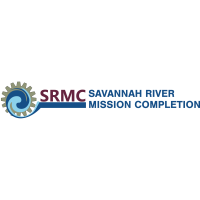Savannah River Site Achieves Record Risk Reduction From Tank Waste
For Immediate Release
Media Contacts:
Sonya Goines, U.S. Department of Energy
(803) 646-2788
Sonya.Goines@srs.gov
Colleen Hart, Savannah River Mission Completion
(803) 208-2428
Colleen.Hart@srs.gov
Savannah River Site Achieves Record Risk Reduction From Tank Waste
AIKEN, S.C. (December 2, 2024) – A record amount of radioactivity has been reduced over the last two years in waste tanks at the U.S. Department of Energy Office of Environmental Management (EM)’s Savannah River Site (SRS).
More than 23 million curies have been processed from the waste since February 2022, when Savannah River Mission Completion (SRMC) assumed operation of the SRS liquid waste project — the most processed in a two-year period. SRMC is EM’s contractor responsible for safely treating and disposing of the millions of gallons of waste remaining in the underground tanks at SRS.
That achievement has brought the amount of radioactivity to a record low in the SRS tank farms. For the first time in SRS liquid waste program history, less than 200 million curies — a unit of measurement for radioactivity — remain in the tanks. For comparison, there were 562 million curies in 1996 when the Defense Waste Processing Facility (DWPF) began operating. Today, that number is 198 million.
While some of the radioactivity decays naturally, most of the curie reduction has been through EM’s radioactive liquid waste processing facilities. These facilities, including the Salt Waste Processing Facility (SWPF) along with DWPF, are operated by SRMC.
Jim Folk, DOE-Savannah River assistant manager for waste disposition, said each curie removed from the tank waste at SRS is a gain for EM because it ensures a safer environment for the surrounding communities in which it serves.
“The longer the curies in the waste remain in the tanks, the longer the risk remains at SRS,” Folk said. “Knowing that, we remain committed to executing the best strategy in which to remove the waste containing the greatest risk more quickly and efficiently than ever before.”
Curies are reduced from the waste by removing the highly radioactive sludge, where the majority of the curies are found in the high-activity radionuclides like cesium and strontium, from the tanks. The sludge is treated at DWPF, where it is vitrified and poured into stainless steel canisters safe for long-term storage and disposal.
Increased production at SWPF has also accounted for the curie-reduction milestone. The salt waste, which takes up most of the tank waste volume and half the radioactivity, is decontaminated at SWPF using solvents and an extraction process. The decontaminated salt solution is then sent to the Saltstone Production Facility, where it is mixed with dry materials to create a grout, which is then poured into saltstone disposal units to harden into a form safe for permanent onsite disposal.
SRMC’s strategy is to aggressively pursue waste removal in tanks with the most curies first as SRMC works toward operational waste tank closure, according to Mike Borders, SRMC optimization and integration director.
“Through a strategic and optimized risk-reduction approach, SRMC is processing the material with more radioactivity sooner in the SRS Liquid Waste System Plan than ever before,” Borders said. “Working this plan is delivering excellent results and proving the path to completion of the liquid waste mission.”
One example of excellent results from SRMC’s strategy is achievement of preliminary cease waste removal of Tank 10, achieved in May — delivering a federal and state milestone seven months ahead of schedule. SRS also recently reached that milestone for Tank 9.

A record amount of radioactivity has been reduced over the last two years in waste tanks at the Savannah River Site.

More than 23 million curies have been processed from the waste in underground tanks at the Savannah River Site since February 2022, when liquid waste contractor Savannah River Mission Completion assumed operation of the liquid waste project. This reduction marks a milestone in the site’s liquid waste program history: Less than 200 million curies remain in the tank waste inventory.



